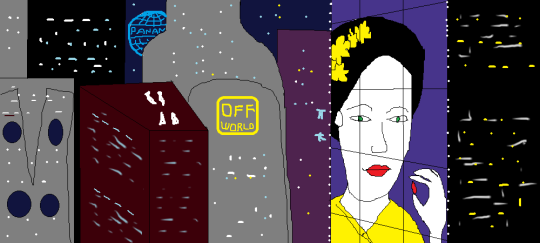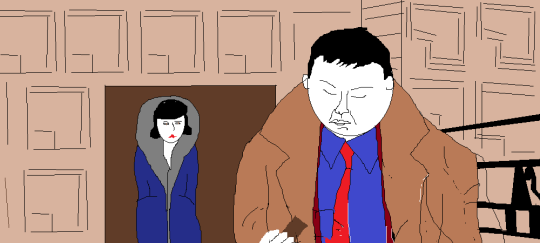During the 17th and 18th centuries, European Enlightenment philosophers discarded the origin stories in religious texts as wildly implausible or simply allegorical. But they found themselves charged with coming up with their own, naturalistic explanations for the origins of life, law, morality, etc. And most pressingly for their inquiries into psychology and cognition, many of those thinkers sought to explain the origins of language.
The Biblical story of the Tower of Babel had long been widely accepted, either literally or metaphorically, as indicative that all humans once spoke the same language (The so-called “Adamic Language”). Many competing theories came from philosophers like Locke, Rousseau, Condillac, Herder, and the Scottish jurist and philosopher James Burnett, known by his hereditary title, Monboddo.
Anticipating Darwinian evolution as well as comparative linguistics, Monboddo argued that language arose as a response to a changing environment, and that it came into being, along with human beings, in one place, then diversified as humans spread across the globe and diverged culturally. This was known as the theory of monogenesis, or the “single-origin theory” of language.
As the narrator in the video above, from linguistics YouTube channel NativLang, puts it, even after the story had been naturalized—and the languages of the world mapped into proto-evolutionary family trees—“Babel still held one intriguing idea over us; that original language.” And yet, rather than search for the mystical Adamic Language—the revelation of a divinity—as many alchemists and occultists had done, natural philosophers like Monboddo used emerging comparative linguistics methods to attempt a historical reconstruction of the first human language.
They were less than successful. Giving it up as futile, in 1866, the Society of Linguistics in Paris banned all discussion of the issue. “Enter the late Joseph Greenberg” to begin the search anew, says NativLang. A 20th-century American linguist, Greenberg used mass comparison and typology to compare “superfamilies.” Later linguists took up the challenge, including Merritt Ruhlen, who “compared vocabulary from across the globe and reconstructed 27 proto-words” supposedly belonging to the first human language, called “Proto-World.” Ruhlen’s theory has since been critically savaged, says NativLang, and “confidently tossed… into the bins of fringe linguistics, pseudoscience… and yet, Babel’s first, and biggest claim lingers.”
The intellectual history in this five-minute video is obviously oversimplified, but it highlights some fascinating features of the current debate. As Avi Lifschitz, historian of Enlightenment theory of language, writes, we tend “to assume that our own cognitive theories are the latest word when compared with those of our predecessors. Yet in some areas, the questions we are now asking are not too different from those posed some two or three centuries ago.” In the case of the origins of language, that is most certainly so. Central to the theories of Locke and others, for example, “the precise role of language in the brain and in human perception” remains “one of the most topical questions in today’s cognitive science.”
Although many scholars have given up attempting to reconstruct the original language, linguists, cognitive scientists, and evolutionary biologists continue to find compelling evidence for the single-origin theory. The NativLang video omits perhaps the most famous modern linguist, Noam Chomsky, who argued that a chance mutation occurred some 100,000 years ago, giving rise to language. Even as languages have diverged into what’s currently estimated at around 6,000 different tongues, Chomsky claimed, they all retain a common structure, a “universal grammar.”
Whatever it might have sounded like, original language would likely have arisen in Sub-Saharan Africa, where modern humans evolved somewhere between 200,000 and 150,000 years ago. In 2011, University of Auckland biologist Quentin Atkinson used linguistic techniques somewhat like Monboddo’s to show that African languages—especially click languages like the South African Xu—have considerably more individual sounds (phonemes) than others. And that languages around the world have fewer and fewer phonemes the further they are from southern Africa.
Most scientists agree with the basic evolutionary history of human origins. But like Ruhlen’s “Proto-World,” Atkinson’s linguistic theory “caused something of a sensation,” writes Science Daily, and has since come in for severe critique. The debate over many of those Enlightenment questions about the origins of language continues. Barring some draconian ban, “the search for the site of origin of language,” and for the language itself and the evolutionary mechanisms that produced it, “remains very much alive.”
If you would like to sign up for Open Culture’s free email newsletter, please find it here. Or follow our posts on Threads, Facebook, BlueSky or Mastodon.
If you would like to support the mission of Open Culture, consider making a donation to our site. It’s hard to rely 100% on ads, and your contributions will help us continue providing the best free cultural and educational materials to learners everywhere. You can contribute through PayPal, Patreon, and Venmo (@openculture). Thanks!
Related Content:
The Tree of Languages Illustrated in a Big, Beautiful Infographic
How Languages Evolve: Explained in a Winning TED-Ed Animation
Noam Chomsky Talks About How Kids Acquire Language & Ideas in an Animated Video by Michel Gondry
Learn Latin, Old English, Sanskrit, Classical Greek & Other Ancient Languages in 10 Lessons
Josh Jones is a writer and musician based in Durham, NC. Follow him at @jdmagness







